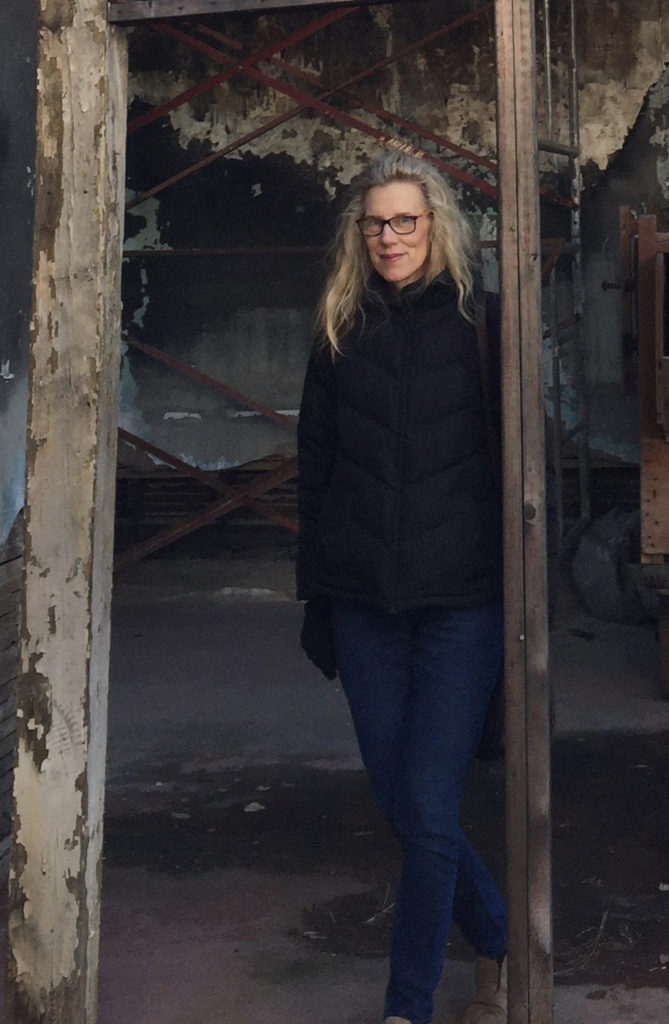
As an artist, Margaret Keller makes things that explore her concern about the place of humans living on planet earth.
Her work has been exhibited in more than 50 galleries, museums and collections across the country and the world. Her exhibit, Eyes Wide Open: Surveillance Series is currently on display through Thursday, Dec. 31, at The Gallery at The Kranzberg. This body of work takes a look at the proliferation of government, corporate and personal surveillance cameras – especially the vast insertion of surveillance cameras into the natural world. Using a diverse range of media, such as 14-foot-long graphite drawings, watercolor, frescos, mixed media, 3D printing, video and installation, she examines the tangled, complex and hidden aspects of this intrusion.
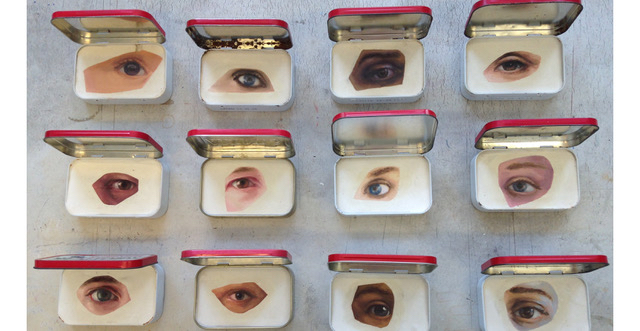
Keller said that frequent use of digital technology – like cell phones and computers – plays such a seductive, pervasive role in her life (and nearly everyone’s), especially during the pandemic. And also constant, but less obvious in our lives, are networks of digital surveillance that invade our privacy with virtually every online activity.
She has worked as a full-time professor of art at St. Louis Community College-Meramec, and as visiting associate professor at Washington University in St. Louis and in Florence, Italy. Her multi-faceted career has also included roles as a historic preservation consultant, fiscal analyst for the Missouri State Legislature, self-employed cake decorator, box factory worker, writer, wife and mother.
Problem-solving, along with the challenge of using unfamiliar and cutting-edge materials or techniques, is an essential aspect of her art practice, as well as a means to increase creative possibilities. She recently shared with us some of her early experiences with art and how it has evolved, along with the inspiration behind her exhibit at The Gallery at The Kranzberg.
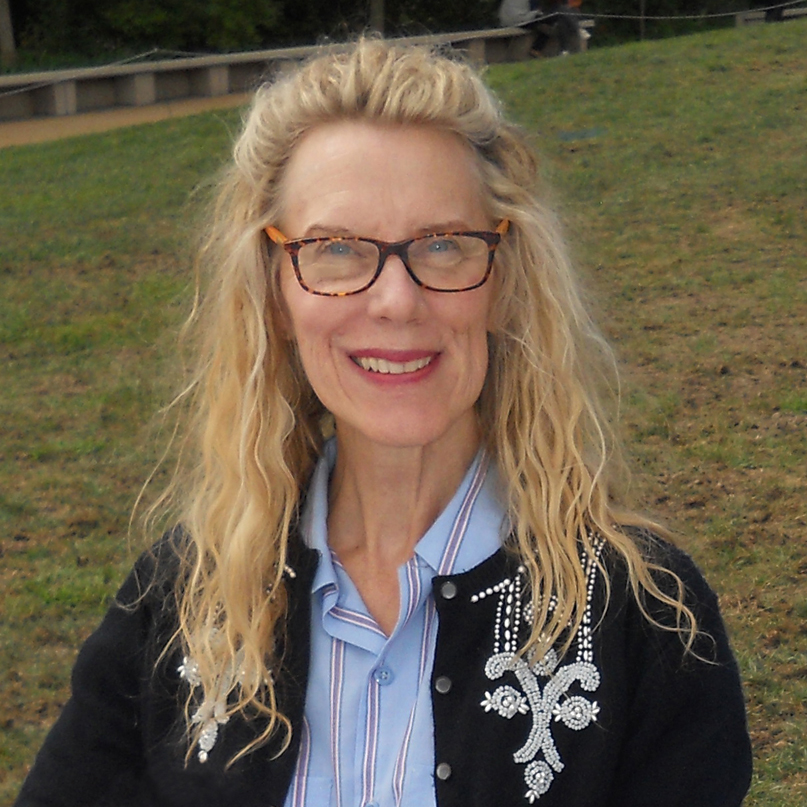
Where are you from originally, and what brought you to St. Louis? I seem to keep moving across the state of Missouri! After being born in Kansas City, growing up on the former University of Missouri apple orchard near Columbia, moving north to the Kirksville area to start a radio station with my then-husband and work as historic preservation consultant for the Northeast Missouri Regional Planning Commission, I headed south to live on 400 acres of Ozark wilderness, then detoured to Jefferson City to be a fiscal analyst for the Missouri State Legislature. I ultimately came to St. Louis with my young son to attend graduate school at Washington University. I ended up staying here after receiving my Master of Fine Arts degree because I had a child settled into school and had been hired as the coordinator of adult programs at the Saint Louis Art Museum, a position I loved. All this time, I was making art. But my goal was always to teach art full-time at the college level because that would give me a significant amount of time to also be an artist. In such an incredibly competitive field, I am grateful that I was selected for a full-time position doing what I love: teaching painting and drawing.
When did you become interested in art? I remember one day being so excited by all the different colors of crayons in my box that I “drew” all over our white kitchen cabinets as far as I could reach. These were just the scribbles of a 3-year-old, but I thought they were magical. My mother (a devoted grade-school teacher) didn’t get angry. She suggested I draw on paper, and from then on, I was constantly drawing, painting and making things. I haven’t stopped. Because I was able to draw and paint very realistically at that young age, I made the career decision to be an artist. I had no clue as to the difficulty of making a life as an artist in our society. Yet when I did realize this, I didn’t deviate from my impractical decision.
What is your preferred medium? With luminous transparency, hard-to-control fluidity, and incredible unexpected effects, the beauty of watercolor really captured me as a medium. You have to be fearless, let go of rigidity, and accept that it’s easy to ruin your painting! Colors are more intense than in any other medium because with watercolor the white of the paper creates the illusion of light by shining through the transparent paint. I love the challenge of controlling paint with a mind of its own. Watercolor is so versatile: it can be spontaneous, bold, childlike, and full of surprises, or it can create a super controlled, detailed realism more real than reality. Its infinite potential is what really captured me; watercolor was the first medium I focused on professionally after my undergraduate degree in drawing. As my first love, drawing remains my means of thinking visually. With a big gap between undergrad and grad school spent producing unusual, large-scale watercolors, it was really only in grad school that I became intrigued with oil paint and printmaking. All of these experiences led to my currently preferred medium: installation art, which uniquely allows me to create an entire environment that can incorporate any media I need to fully express my ideas.
How has your art evolved through the years? Like many artists, I started out making traditional, realistic drawings and paintings based on the visual world around me, but that changed. Now my art evolves out of issues I feel passionate about, want to communicate, and am compelled to share, rather than coming solely from observation. Because art is visual and how it looks is prime, visual elements play an equally major role in what I create. But now I’m inspired by social and political concerns, rather than the visual world. Ideas are my driving creative force. As a conceptual artist, I want art that moves beyond the decorative, documentary or representational. Through a driving idea, I strive for the unusual and the beautiful.
Working at a museum had a huge impact on my work. It made me want people to be able to physically interact with my art, rather than having a hands-off experience. My goal is to give people a complete, immersive experience by expanding my work into space and making an entire environment, rather than being restricted to 2D paintings hung on the wall. All this means I often turn to installation. My installations fill entire rooms and use sometimes surprising materials like candy, holographic floors, eggshells, tar, feathers, lipstick, dirt, bones, 3D printed sculptures, digital media, chrome, wood, aluminum, plaster and plastic. There aren’t many limits for installation art.
In 2019, I learned laser cutting in order to make several 14-foot-tall hanging sculptures. After exhibiting one at the William and Florence Schmidt Art Center, they added three of these to their permanent collection. For my installation, Botanica absentia, at the Contemporary Art Museum last year, I laser cut an incredible material – dichroic Plexiglas – into hundreds of seedpod shapes that dangled from a massive chrome tree limb sculpture suspended at ceiling level. Dichroic Plexiglas has four stunning qualities: it is colorless and translucent, yet casts multi-colored shadows, it’s a reflective mirror, and best of all, it refracts light in all the colors of the spectrum, much like a prism. In this installation, visitors walking inside the space gently disturbed the air – which made the seedpods move, too – causing rainbow-like refractions (from the seedpods) to dance onto the walls, floor and space of the room. Black walls and a holographic floor created a nearly psychedelic effect and attracted everyone, from babies to the elderly.
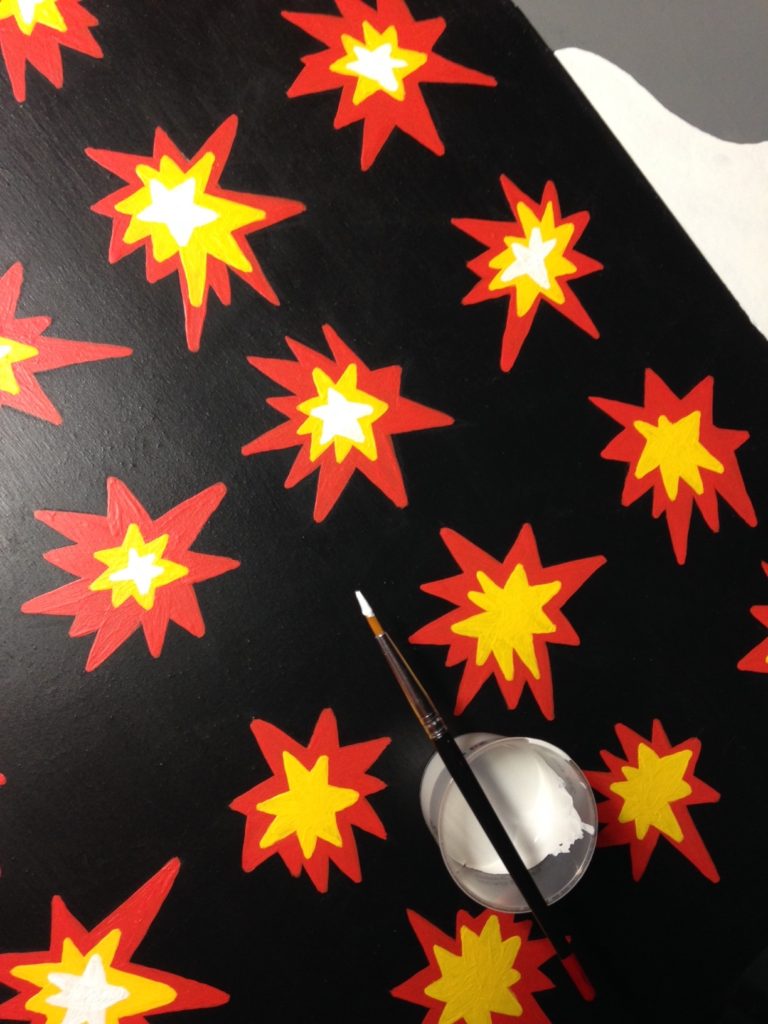
I’d never experienced laser cutting and dichroic Plexi before, and needed both for my concepts to come alive. As the best solution for making 109 tiny drone sculptures that were all exactly the same (“USofA Drone Carpet” on view in Eyes Wide Open: Surveillance Series at The Kranzberg), I taught myself 3D design software and designed the sculptures to be 3D printed using selective laser sintering on nylon powder.
Concerning Eyes Wide Open: Surveillance Series at The Kranzberg, what inspired the body of work? It all started when I pulled into one of the giant concrete parking garages at the University of Missouri-St. Louis, where I was headed to Gallery 210 to view the current art exhibit. After maneuvering my Mini Cooper into a tiny spot, I happened to look up and saw a surveillance camera with a bird’s nest built in it. Twigs and nesting materials were woven together with the camera’s cables to make an integrated and bizarre object. This strange, shocking and thought-provoking juxtaposition of man-made technology with nature happened about 14 years ago. At that time, the proliferation of surveillance cameras hadn’t reached huge numbers. Or so I thought. Right after that, I started looking and was surprised to find them at every traffic intersection, on top of Walgreens, at the bank, at Quick Trip – everywhere. Cameras were recording virtually every moment of our lives in public. Since then, I learned that their numbers have only exploded to the point that we are “on camera” over 75 times per day. The intensely colored painting “Infrared” was the result of my experience, using a mix of styles, ranging from super real to what you’d see in a graphic novel. I showed a bird, an infrared surveillance camera, and a tangle of cables and nesting materials all set into an abstracted environment. It was the first of my surveillance series, which is still growing today.
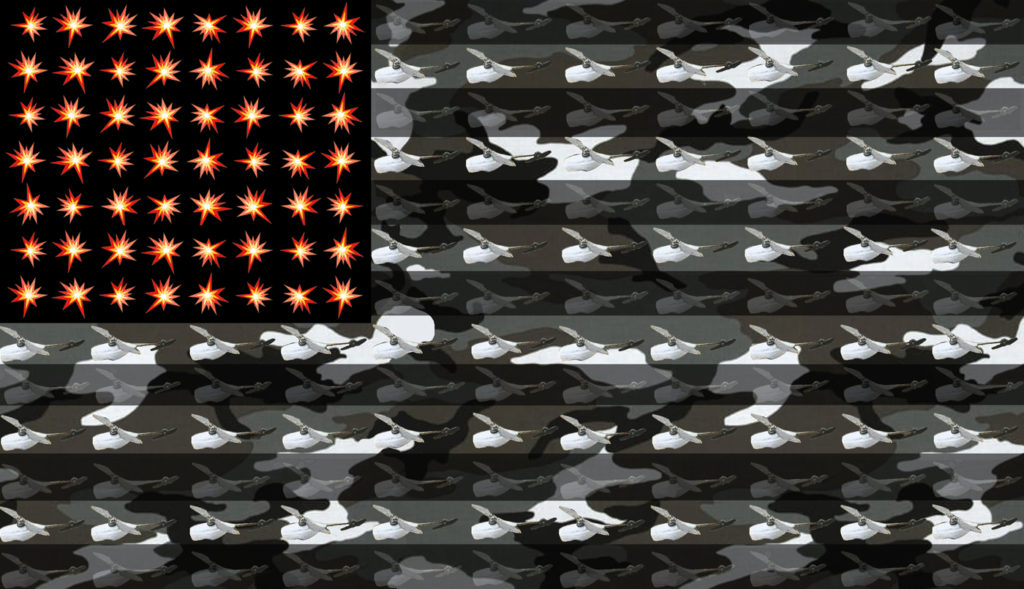
What message are you trying to convey to viewers? Someone asked me why they should care about surveillance. Here in St. Louis, government and police surveillance with no oversight is an ongoing problem, threatening the civil liberties of all, but especially those of people of color, immigrant and refugee communities, and local activists. In July, a member of the Board of Aldermen made a resolution for St. Louis to contract for limitless aerial “spy plane” surveillance. After working with the citizens’ group, Privacy Watch STL, I know that since at least 2017, our Board of Aldermen has failed to pass a bill requiring oversight, accountability and transparency of surveillance practices by the St. Louis police. I think this matters. The current federal administration has overturned an FCC regulation banning internet service providers from selling our private information without our permission. Not long ago, my husband and I were sitting at our kitchen table talking about cats – even though we didn’t have one. A short time later, ads for cat food appeared on our digital devices because our conversation was not private inside our own home. My concern is the impact of warrantless and unconstitutional surveillance on our privacy. Just last week, the news warned of Zoom hacks into email accounts. Events like these are what feed Eyes Wide Open: Surveillance Series, especially my video “Off The Record.” My goal is to raise awareness of these issues, in the hope that viewers will be moved to support our right to privacy, and even to advocate for it. My art looks back at government, corporate and personal surveillance online and by cameras – especially at the overwhelming insertion of these cams into the natural world – and focuses on the secretive relationship between subject and spectator.
During the pandemic, have you been able to find more “quiet” time in your studio to create your art? And has it inspired your art in any way? I haven’t been going to my studio building, which has multiple studios, communal areas and commercial spaces, but I can’t wait to get back to my space when this is “over.” Back in March, I brought lots of materials to my home, where I have studio space in the basement, the dining room, the garage and the third floor. I’ve taken over the house! I think maybe I have found more time for art due to fewer distractions and literally, not going anywhere. I have had four exhibits this year and have been busy full-time with art. Each exhibit has either had to close or have an online option due to COVID-19. Instead of seeing that as a negative, I think it’s great that almost anyone, anywhere in the world, any time of day or night, is now able to see art online. The pandemic has inspired my art in significant ways. I’m more aware of how precious life, community, time and connections are. We all are affected by and need each other.
Keller holds a Bachelor of Fine Arts degree in drawing from the University of Missouri-Columbia and a Master of Fine Arts from Washington University in painting and printmaking. Her studies also include post-graduate study in experimental electronic media (video game design, animation, digital drawing and video) at Webster University. She was the teaching artist-in-residence at The Forsyth School in St. Louis in 2019.
Eyes Wide Open: Surveillance Series will be on display by appointment only with full COVID-19 mitigation policies in place, through Thursday, Dec. 31, at The Gallery at The Kranzberg. For more information or to book a viewing, visit kranzbergartsfoundation.org/visual-art/.





